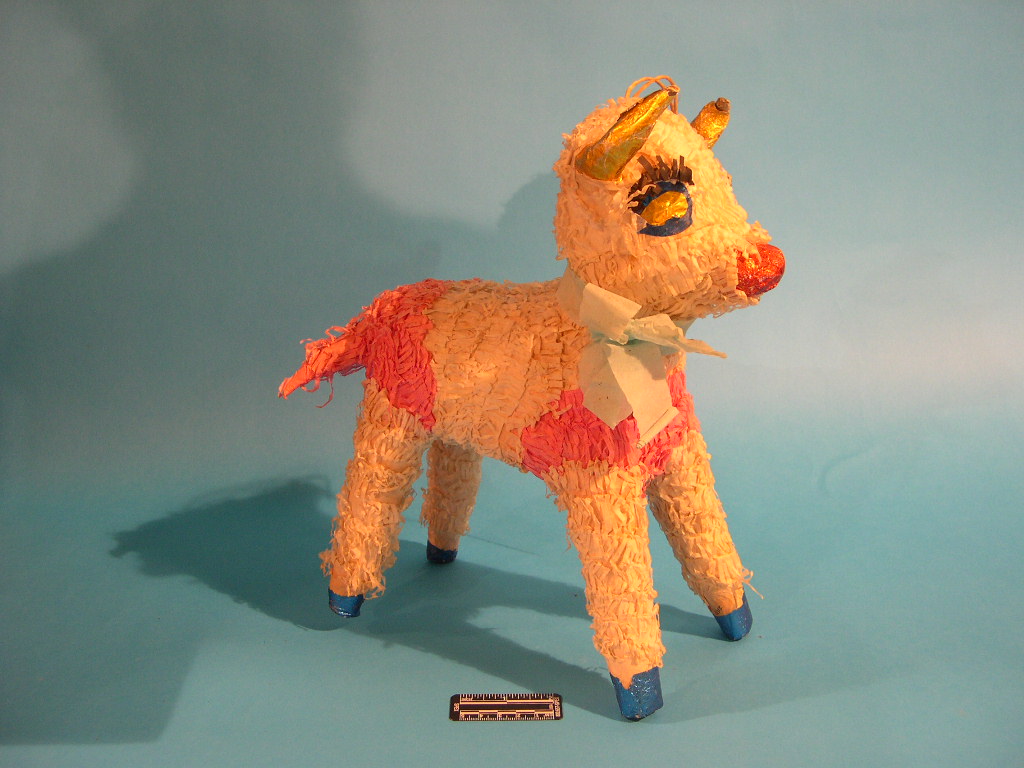Piñata-torito, papier-mâché, c.1940, gift of Aaron J. Sharp, 1972.7.12
Although more commonly used for birthday parties in the United States, bashing the piñata is used during the Christmas time in Mexico and some of Latin America. Cracking open a papier-mâché object however isn’t restricted to North America. In fact, quite surprisingly, the piñata originated in China. Marco Polo was the first European to bring the practice to his home continent were it became very popular. When the Spanish then set sail across the Atlantic and encountered the Aztec people, they were shocked to noticed that the piñata was already being used. The Aztec empire filled a clay pot with fruits, feathers, and small treasures. Just like the Chino-European tradition, the selected beater was blindfolded. However, this tradition had distinct religious meaning as it was seen as an offering to the Aztec war and sun god Huitzilopochtli’s birthday during the winter solstice. Spanish missionaries were quick to find cultural similarities and use them for conversion. The Spanish excused the piñata as a metaphor for Satan. Although the outside is bright and attractive, only someone with (in this case literal) blind faith could destroy him and gain a reward. The Aztec worship of Huitzilopochtli was also re-branded as the Las Posadas tradition. It is a festival of the nine days before Christmas representing the nine months of the Virgin Mary’s pregnancy. During this time, biblical reenactments are preformed and, of course, piñatas are broken.

